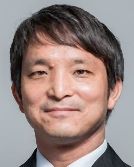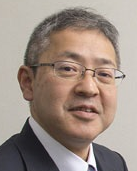Symbiotic Systems(NEC Corporation)

Research Staff
-

Professor
Rui ISHIYAMA -

Associate Professor
Eiki ISHIDERA
| r-ishiyama@is.naist.jp | |
| To the site | https://www.nec.com/en/global/rd/ |
Research Areas
To enable machines (Artificial Intelligence, AI) to work in in good harmony with humans, we are involved in research and education of technology for precise real-time recognition and comprehension using sensors such as cameras, especially of real-world situations where there are many people and objects moving around and interacting.
In recent years, technological innovations based on deep learning techniques have dramatically increased the performance of AI, particularly with regard to image recognition. It is expected that this technology will be used in diverse applications including real-time analysis of security camera footage, and inspection/robotics in factories. However, AI currently requires not only large amounts of learning data to be prepared in advance, but also large amounts of adjustments to adapt to each installation site. As a result, there are still many issues to be overcome in order to apply AI to diverse real environments that change from one moment to the next. Sensing more detailed data from the real world is the key technology.
To adapt to environmental changes, it is useful to capture changes in real-world conditions with faster real-time performance and in greater detail. In particular, if it is possible to perform not only spatial analysis of subjects that are targeted by most deep learning models, but also the detailed temporal analysis and comprehension, then it should be possible to grasp changes more reliably and adapt more easily to diverse environments. Specifically, at our laboratory we are mainly working on the following themes, but we also work on a wide variety of general recognition technologies primarily involving image recognition, such as improvements of deep learning itself.
Product information system using image matching and automatic information gathering
In order to identify a product from a database by capturing an image of the entire product with a camera and performing image matching and providing information such as authenticity verification and information provision, not only is high-speed and high-accuracy image matching technology required, but also a mechanism is needed to efficiently collect images of a wide variety of products that are constantly changing without requiring much human labor, and to update the database constantly. We are conducting research aiming at the social implementation of such technology and the realization of safe and secure distribution, sales, disposal, and recycling of objects.
Individual object authentication Using Artifact-Metrics
This research aims to develop a technology for authenticating objects (individual identification and counterfeit detection) by capturing and analyzing the minute features (object fingerprints) present on the surface of objects using a camera. This technology can identify each individual, even for mass-produced industrial products, and verify their authenticity. By using such fine image recognition technology, we aim to enable the identification and tracking of every object in the real world at the individual unit level, as well as the authentication of their authenticity. This will enable, for example, the optimization of production efficiency and product/part performance in manufacturing sites, as well as the realization of efficiency and security from the distribution of objects to their use.
Key Features
Joint research and collaboration
Our collaborative organization (NEC) is continuing to strengthen our core technological ability while promoting joint research with various research institutions.
Open and global research environmentt
We invite many researchers and internship students from Europe, Oceania and Asia to the open laboratories at NEC. Students of our laboratory learn about various research fields and languages, while gaining a global point of view.